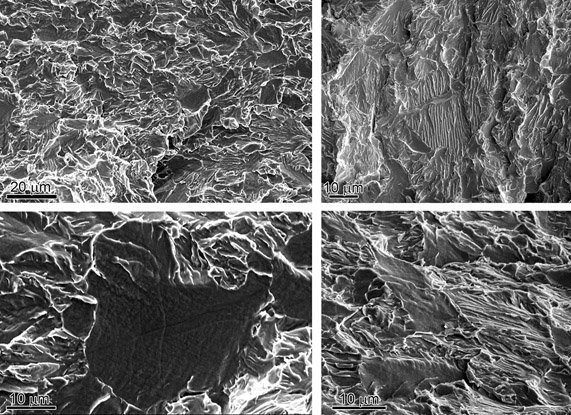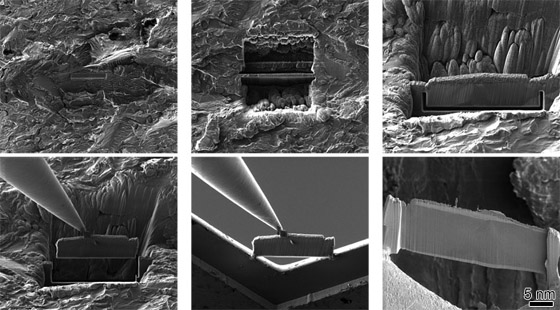


![]()
My project is concerned with determining the susceptibility of pipeline steels to hydrogen embrittlement. The project is driven by the need to find an economical means of distributing hydrogen gas from remote production facilities to consumer stations nationwide should the decision be made to move to a hydrogen-based economy. The most economically viable distribution system is to utilize the existing natural gas pipeline distribution system. However, it is unclear if this pipeline system is safe for delivery of high pressure hydrogen gas. My project involves characterizing pipeline steels in terms of microstructure and permeability and determining the hydrogen-induced failure mechanism under different loading conditions. This information is needed to inform a physically-based model of hydrogen embrittlement and to test the validity of the predictions from the model.
 Figure 1. SEM images showing different features on hydrogen fracture surface.
Figure 1. SEM images showing different features on hydrogen fracture surface.
To explore hydrogen-induced failure mechanisms, I have been using focused ion beam machining to extract samples from site specific locations so that the microstructure just beneath the fracture surface can be characterized by using transmission electron microscopy techniques. This information is being correlated with a fractographic analysis of the failure surfaces.

Figure 2. FIB lift-out process for TEM samples.
 Figure 1. SEM images showing different features on hydrogen fracture surface.
Figure 1. SEM images showing different features on hydrogen fracture surface.
To explore hydrogen-induced failure mechanisms, I have been using focused ion beam machining to extract samples from site specific locations so that the microstructure just beneath the fracture surface can be characterized by using transmission electron microscopy techniques. This information is being correlated with a fractographic analysis of the failure surfaces.

Figure 2. FIB lift-out process for TEM samples.
PhD in Materials Science and Engineering
B.S. in Materials Science and Engineering, Cornell (2005)
Hydrogen distribution through natural gas pipelines